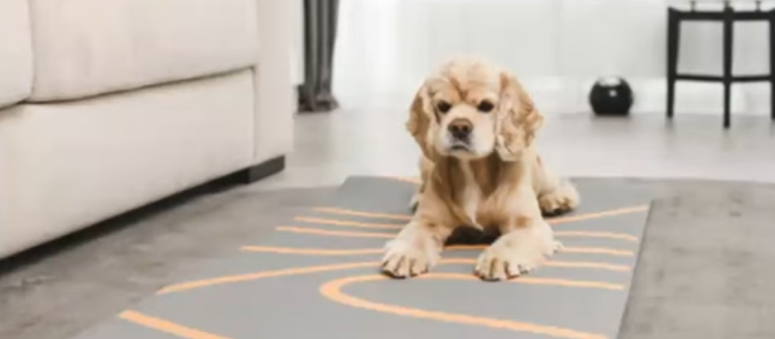Welcome to the AskVet Webinar Series where our doctors and veterinary professionals present relevant information and discuss important pet topics. Join our live streams to learn how you, your dogs, and your cats can live your best lives!
In this discussion with Dr. Marks, we talk about the use of a settle mat as a training tool. A settle mat creates a safe space for your dog to relax, as well as reduces anxiety and fear. Watch below to learn more about this training technique.
A settle mat is a specified mat that your dog can go to and relax. It is not a dog bed, but a mat where they are trained to go for peace and serenity. It allows you as the pet parent to have more control of your dog’s behavior during the day.
Settle mats are a training tool for dogs that are too excitable, or have separation anxiety.
Pets that are reactive towards people or other pets or dogs that have OCD behaviors (patterned actions with no results, like tail spinning) can benefit from use of a settle mat as well.
What You Need to Start:
- Mat (any type such as yoga, bath, front door mat)- This is your training tool.
- Clicker- Clicker training creates sounds that trigger your dog to understand good behavior.
- Treats- Have a variety of types that your dog loves.
Steps to Settle Mat Training
- Place the mat down and wait quietly. This takes time and patience. Refer to clickertraining.com for assistance.
- Praise/click and give a treat when your dog steps on the mat. This requires perfect timing. As soon as your dog steps on the mat, praise and click. Repeat 10 times to establish a good habit. Start placing treats directly on the mat. When your pet steps on the mat to get the treat, click and praise at the same time.
- Toss treats away from the mat and move the mat to a new location. You need your dog off the mat to continue training. For this next step, your pet must have all 4 paws on the mat this time for treats. Use commands and praise that are succinct, three word phrases, such as “Good job Samantha” or “Good boy Max!” Praise phrases need to be consistent and short so as not to cause confusion for your dog.
- Repetition is key. Continue to move the mat to new locations. Do not leave the mat out all the time. It is a tool to reduce excitement, not a place for a nap. Next your dog needs to sit or lay down on the mat for treats. You may need to give more enticing treats for encouragement. Again, repeat this 10 times to establish a good habit.
- Build up treat intervals. We do not want to condition our dogs for treats only. Using treat intervals solves this issue. Feed 10 treats, but pause briefly in between treats. Wait a moment, then give another treat and repeat. Build up intervals to a 15 second pause and work them up to extended periods of time on the settle mat.
- Add a Cue. Cue them to go to the settle mat. For example say, “Samantha settle” or “Go to bed,” or simply say “Mat.” Right before, or as you put the mat down, add the cue. The goal for your dog is to reach 2 minutes and 30 seconds on the mat.
- Add distance. Most of the time during training, we are in close proximity to the mat. Take 1 step back then praise and give a treat if your dog remains on the mat. Continue. If your dog is going to be on the mat for a long period of time, choose a toy to be chewed on and that occupies your pup for a while (like a frozen kong, or rope toy).
Tips for Success
- Always end a session. Give your dog a cue that the session is over. Roll up mat and put away. Do not allow use of the mat until training session.
- Never use a mat as a place of punishment. It needs to always be a positive safe space.
- Do not interrupt if your dog is settled on the mat. Let them be.
- Keep sessions short. A session lasting 30 seconds to 2 minutes of training per day is enough. Training sessions should be short and focused.
- Use pheromones. Pheromones are natural chemical compounds that dogs emit normally. Adaptil is a helpful product for settle mat training. Spray on the mat, 8 pumps per session. This creates a warm and relaxing feeling for your dog.
At AskVet, we know that every pet has its own personality and unique set of needs, which will continually evolve over time. We’re here to help you evolve with them. We use 360° Wellness Plans to help guide you through every stage of your pet’s life—and we’re with you every step of the way.
Join AskVet Today






